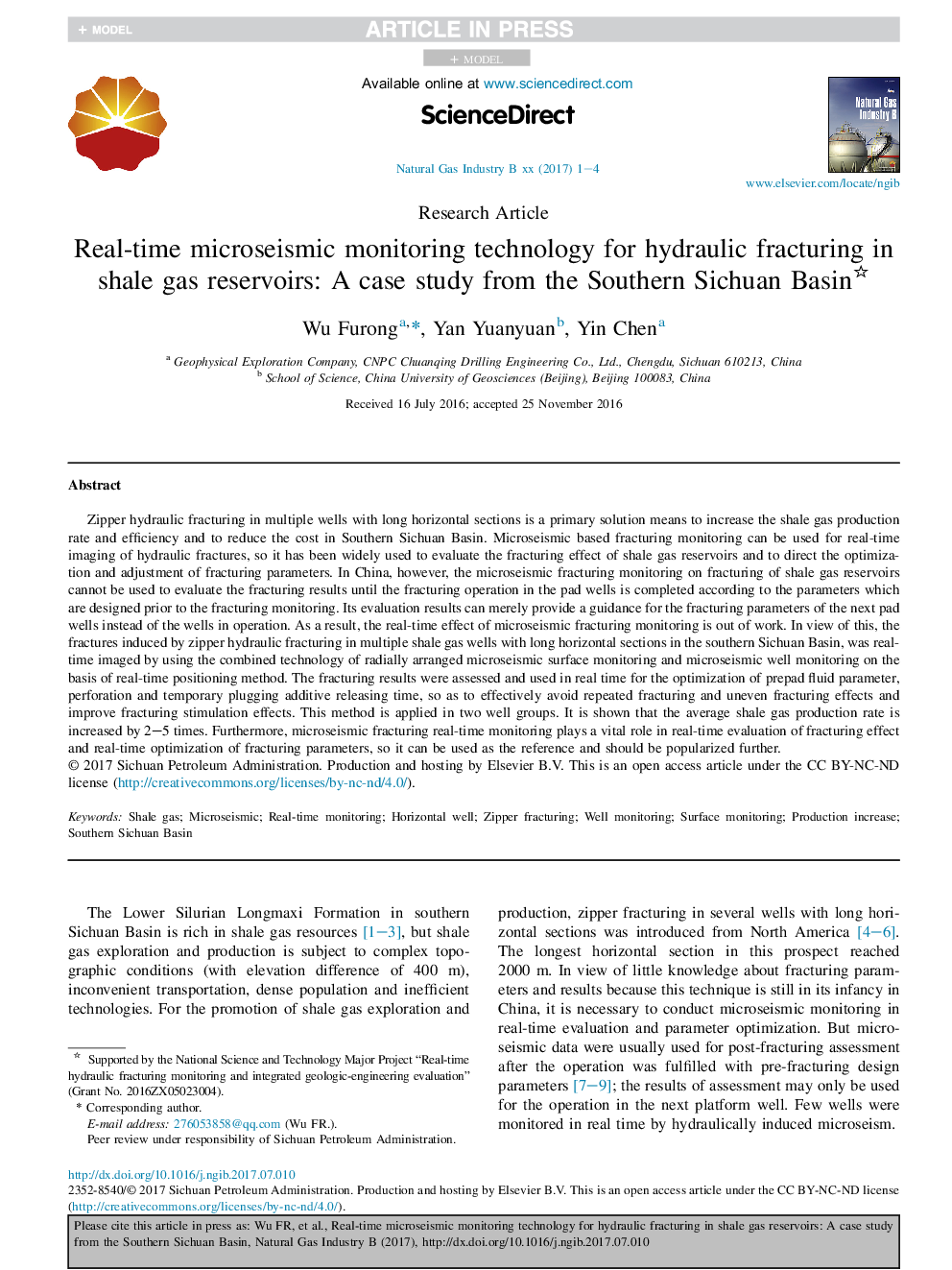| Article ID | Journal | Published Year | Pages | File Type |
|---|---|---|---|---|
| 8109876 | Natural Gas Industry B | 2017 | 4 Pages |
Abstract
Zipper hydraulic fracturing in multiple wells with long horizontal sections is a primary solution means to increase the shale gas production rate and efficiency and to reduce the cost in Southern Sichuan Basin. Microseismic based fracturing monitoring can be used for real-time imaging of hydraulic fractures, so it has been widely used to evaluate the fracturing effect of shale gas reservoirs and to direct the optimization and adjustment of fracturing parameters. In China, however, the microseismic fracturing monitoring on fracturing of shale gas reservoirs cannot be used to evaluate the fracturing results until the fracturing operation in the pad wells is completed according to the parameters which are designed prior to the fracturing monitoring. Its evaluation results can merely provide a guidance for the fracturing parameters of the next pad wells instead of the wells in operation. As a result, the real-time effect of microseismic fracturing monitoring is out of work. In view of this, the fractures induced by zipper hydraulic fracturing in multiple shale gas wells with long horizontal sections in the southern Sichuan Basin, was real-time imaged by using the combined technology of radially arranged microseismic surface monitoring and microseismic well monitoring on the basis of real-time positioning method. The fracturing results were assessed and used in real time for the optimization of prepad fluid parameter, perforation and temporary plugging additive releasing time, so as to effectively avoid repeated fracturing and uneven fracturing effects and improve fracturing stimulation effects. This method is applied in two well groups. It is shown that the average shale gas production rate is increased by 2-5 times. Furthermore, microseismic fracturing real-time monitoring plays a vital role in real-time evaluation of fracturing effect and real-time optimization of fracturing parameters, so it can be used as the reference and should be popularized further.
Keywords
Related Topics
Physical Sciences and Engineering
Energy
Energy Engineering and Power Technology
Authors
Furong Wu, Yuanyuan Yan, Chen Yin,
